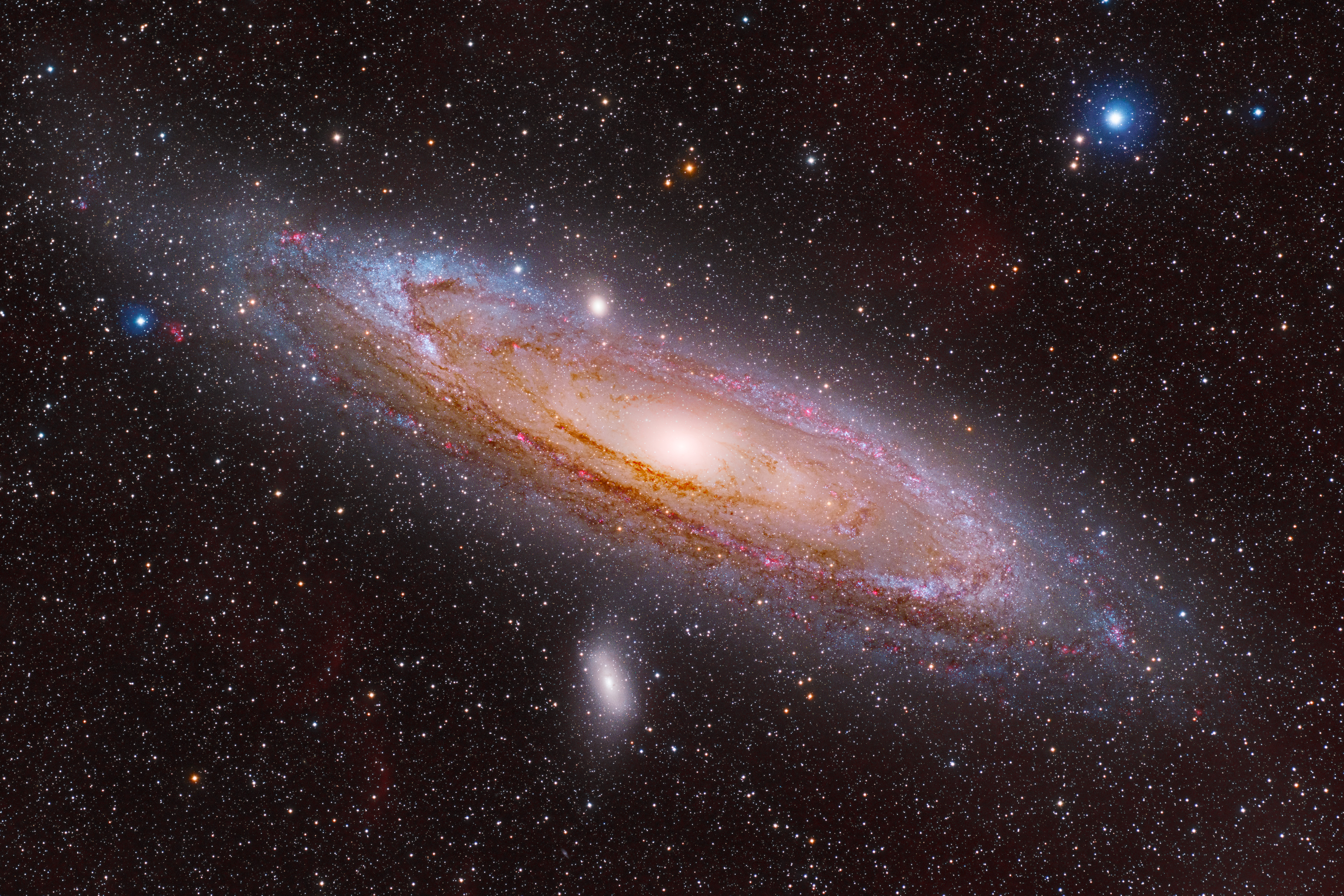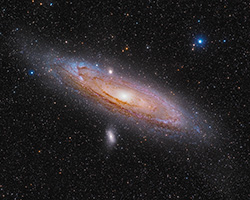
 |
The Andromeda Galaxy with Hydrogen |
|||||||||||||||||||||
About This PhotographAt a distance of "only" about 2.5 million light-years, the Andromeda Galaxy is the nearest major galaxy to our own. It has roughly the same mass as the Milky Way, around the equivalent of one trillion times the mass of our sun. As deep-sky objects go, it is a big, beautiful sight easily visible to the naked eye from dark locations. It is a good example of a spiral-type galaxy, with regions of dense dust and gas adjacent to reddish star forming regions and clusters of hot, bright new blue stars, all forming spiral arms that wind out from the bright core. To the photo from August, this photo layers on 4.75 hours of exposures taken through a filter that isolates light from only ionized hydrogen atoms. This brings out the pink star-forming regions in the galaxy as well as some faint, wispy clouds of hydrogen in our own galaxy, through which we view our distant neighbor. | |||||||||||||||||||||
|
Related Photographs | |||||||||||||||||||||
|---|---|---|---|---|---|---|---|---|---|---|---|---|---|---|---|---|---|---|---|---|---|
| |||||||||||||||||||||
|
|||||||||||||||||||||
